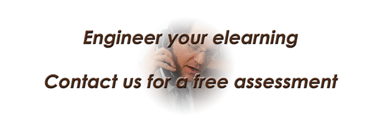In recent years, eLearning has become increasingly popular, especially since the Covid-19 pandemic forced many students to attend classes remotely. While eLearning offers numerous benefits, it can be challenging for students to engage in online activities with their peers. This is because online learning often lacks the social and interactive components that students enjoy in traditional classrooms. However, with the right strategies, educators can motivate eLearning students to engage in online activities with other students. In this essay, we will discuss some effective ways to do so.
Encourage Collaboration and Group Work
Collaboration and group work are effective ways to motivate eLearning students to engage with their peers. Group work promotes interaction and helps students build relationships with each other, which can lead to a more enjoyable and meaningful learning experience. To encourage group work, educators can use tools such as Zoom breakout rooms or Google Docs to facilitate collaboration and communication between students.
Create a Sense of Community
Creating a sense of community is essential in eLearning environments. When students feel connected to their classmates and instructors, they are more likely to engage in online activities. To create a sense of community, educators can use online discussion boards, social media platforms, or virtual study groups to encourage interaction and engagement among students.
Provide Incentives
Incentives are a powerful motivator for students to engage in online activities. Providing rewards such as extra credit, badges, or certificates can encourage students to participate in online discussions, complete assignments on time, or contribute to group projects.
Use Gamification Techniques
Gamification techniques, such as points, levels, and leaderboards, can make online activities more engaging and enjoyable. By incorporating game elements into eLearning courses, educators can motivate students to participate in online activities and compete with their peers in a fun and interactive way.
Incorporate Real-World Applications
Incorporating real-world applications into eLearning courses can motivate students to engage with their peers. When students see the relevance of their coursework to their daily lives or future careers, they are more likely to participate in online discussions or group projects. For example, educators can use case studies or simulations to demonstrate how the concepts taught in class apply to real-world situations.
Provide Opportunities for Self-Expression
Providing opportunities for self-expression can help students engage in online activities. When students are allowed to express their opinions or share their experiences, they are more likely to feel connected to their peers and the learning experience. Educators can use tools such as blogs or online journals to allow students to reflect on their coursework and share their thoughts with their classmates.
Offer Personalized Feedback
Offering personalized feedback can motivate eLearning students to engage in online activities. When students receive feedback on their assignments or contributions to group projects, they are more likely to feel valued and motivated to continue participating. Educators can use tools such as online grading systems or personalized comments to provide feedback to their students.
Provide Clear Expectations
Providing clear expectations for online activities can help students understand what is expected of them and motivate them to participate. When students know what is required of them, they are more likely to engage in online activities and contribute to group projects. Educators can use rubrics or guidelines to provide clear expectations for online activities.
Foster a Positive Learning Environment
Fostering a positive learning environment can encourage eLearning students to engage in online activities with their peers. When students feel safe and supported, they are more likely to participate in online discussions or group projects. Educators can use positive reinforcement, such as praising students for their contributions or creating a supportive classroom culture, to foster a positive learning environment.
Continuously Evaluate and Improve
Continuously evaluating and improving eLearning courses can help educators identify areas where students are struggling to engage with their peers. By making adjustments to the course design or online activities, educators can improve the overall learning experience and motivate students to engage with their peers.
In conclusion, motivating eLearning students to engage in online activities with other students is essential for creating a successful and meaningful learning experience. By encouraging collaboration and group work, creating a sense of community, providing incentives, using gamification techniques, incorporating real-world applications, providing opportunities for self-expression, offering personalized feedback, providing clear expectations, fostering a positive learning environment, and continuously evaluating and improving, educators can motivate eLearning students to engage with their peers and create a supportive and interactive online learning environment.
Please, like this post. Share this post with others. Leave a comment below, thank you.
References
Alkhalifa, E., & Alabdulkareem, S. (2017). Effective ways of motivating e-learning students to participate in online discussion. Journal of Educational Technology Development and Exchange (JETDE), 10(1), 1-14.
Foster, A. L., & Soles, D. I. (2018). Engaging online learners: A review of learner engagement strategies for online courses. Distance Education, 39(3), 369-391.
Tzeng, J. Y., & Lu, M. C. (2019). Gamification design for enhancing online learning engagement. Interactive Learning Environments, 27(8), 1082-1096.
Zawacki-Richter, O., & Naidu, S. (2016). Mapping research trends from 35 years of publications in distance education. Distance Education, 37(3), 245-269.


